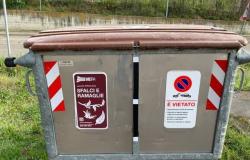Confindustria Veneto Est organizes a conference focused on the economic and environmental potential of waterway optimization
The Canalbianco seen as a great blue highway, 135 kilometers long, connecting the province of Mantua with that of Rovigo, ending in the Venetian area in Chioggia. It was discussed this morning, in the conference room of the Interporto, on the occasion of the conference “Navigable auction: a new resource for the country“, organized by Confindustria Veneto Est, in collaboration with the Region, Venetian Infrastructure, Port System Authority of the Northern Adriatic Sea – Ports of Venice and Chioggia, Confindustria Mantua, Rovigo Interport, Province of Rovigo and Province of Mantua.
It was an opportunity to examine the prospects and potential of optimizing the waterway system in Northern Italy, bringing together representatives of local and national institutions, together with members of the business community.
The meeting also provided the opportunity to outline the state of the art of the Northern Italian waterway system and the economic, employment and environmental benefits that could potentially be activated by its optimization. From 2015 to today, waterway transport in Northern Italy has grown by 160% and the extended supply chain is flying towards one and a half billion by 2030. According to The European House-Ambrosetti study for Confindustria Veneto Est and Confindustria Mantova, the waterway system involves 25 economic macro-sectors, generating an added value of 500 million euros (3% of the GDP of Rovigo and Mantua).
Benedetta Brioschi (Partner Teha): “The waterway system of Northern Italy is faced with an opportunity for rebirth”
“The extended supply chain of the waterway system, which has a key element in the Fissero-Tartaro-Canalbianco-Po di Levante waterway, accounts for only 0.1% of the volumes of goods transported, compared to an average of over 20% in the first 5 European benchmark countries. The transport sector accounts for over 30% of Italian energy consumption: to reach the European decarbonisation targets, a +25% growth in community waterway transport is required. In this scenario, the waterway system of Northern Italy, thanks to its potential support for decarbonisation targets, finds itself faced with an opportunity for rebirth.”
During a round table, the report was presented “The Italian navigable network: a new resource for the country. The opportunities offered by the optimization and efficiency of the Northern Italian waterway system”. Elisa De Berti, vice president of Veneto and councilor for public works, infrastructure and transport, participated; Fulvio Lino Di Blasio, president of the Northern Adriatic Sea Port System Authority; Alberto Lisatti, president of the Italian Internal Navigation Union, Moreno Massetti of Fagioli SpA. Also speaking were: Enrico Ferrarese, president of the Province, Alessandra Ferrari, president of Interporto Rovigo, Alessandra Grosso, general director of Venetian Infrastructure. The work concluded with the speech of Edoardo Rixi, deputy minister of Infrastructure and Transport.
Leopoldo Destro, president of Confindustria Veneto Est and delegate for transport and logistics, declares
“The logistics data for 2023 are important: 135.4 billion euros equal to 8.2% of GDP. Added to this are the strategic nature for our country’s economy, the essential link with the manufacturing industry, which were also confirmed in the complex and unexpected scenario of the last three years. The good logistical-infrastructural structure of the country isTherefore, an essential competitiveness tool, especially for an industry, such as the Italian and Venetian one, which is strongly oriented towards exports. In this context, and in the logic of developing intermodality, the Po Valley-Veneto internal waterway system, together with the logistical infrastructures, such as ports and interports, constitutes a heritage whose potential, not only in terms of transport, but also economic , environmental and tourism is very large and needs to be enhanced with a medium-long term plan. Also based on the full deployment of the potential of the ZLS and the production districts upstream and downstream of the navigable stretch of the Po and, looking to the future, of the Hydrogen Valley.“



